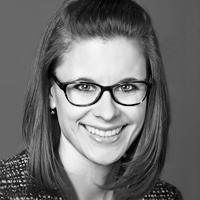This text-based course is a transcript of the webinar, Stuttering Treatment and Counseling: Confronting hard conversations from a theoretical framework, presented by Craig E. Coleman, MA, CCC-SLP, BCS-F and Mary Weidner, MS, CCC-SLP.
>> Craig Coleman: So far in this stuttering series, we have discussed the background of stuttering, assessment of stuttering and Scott Yaruss provided a great review of the ICF model and framework as it relates to stuttering treatment. Brooke Leiman also did a great job talking about difficult discussions with families and how to incorporate families into the therapy process. In this course, Mary Weidner will cover counseling and I will share some specific treatment activities that can be used when working with children who stutter. This discussion should give you an idea of how to accomplish some of the goals that were laid out in yesterday’s presentation, Stuttering Treatment: Treating the whole disorder. We will also address bullying, teasing, and negative reactions, and what impact they may have on children who stutter and how we can prepare children who stutter to handle those situations when they arise.
Learning Objectives
I want to start by covering the learning objectives. Objectives include being able to describe the basic principles that are integral to effective counseling, being able to describe the theoretical framework of various counseling models and being able to describe specific counseling techniques and activities that can be applied in stuttering treatment.
Counseling in stuttering is a very important and sometimes controversial issue. There are still people who have the school of thought that SLPs should not be doing counseling with our clients. However, SLPs should be doing counseling when it relates to communication disorders, and certainly for stuttering, SLPs should be providing counseling because we have the background, the knowledge, and the expertise to be able to do that effectively.
Counseling is not easy to do, and Mary will talk a lot about that today. But, first, I want to address how to work on bullying, teasing and negative reactions; which has a lot to do with counseling as well.
Teasing and Bullying in Stuttering
When looking at teasing and bullying in stuttering, there are different types of bullying to consider. In order for something to be considered “bullying” a few components need to be present. Teasing is very different than bullying, and I hope to lay out those differences today. Bullying has become a bit of a catch word in our society and we have to talk about in in a way that is meaningful, in terms of identifying what is needed for bullying to exist.
Intent
In order to have bullying there needs to be an intent to do harm. Bullying has to be malicious. There has to be an intent to do harm to the person being bullied. That does not mean that there is intent to do physical harm, but there has to be intent to have some kind of negative ramification on the person. That also suggests that a person’s actions might have inadvertent consequences, it might be a negative thing, and it might force negative reactions but it may not necessarily be considered bullying because the intent to harm is not there.
Repetition
The other thing that must occur for bullying is repetition. It has to be behavior that is repeated over a period of time. Essentially, that eliminates one shot circumstances. For example, if a child has an experience with being teased for stuttering - maybe a waiter laughs at them or a store clerk laughs at them – that is a negative experience for the child; it is a negative response to the child’s stuttering and we want to help the child work through those situations. However, that situation does not rise to the level of bullying because the repetition is not there.
Imbalance of Power
There also needs to be an imbalance of power for bullying to be present. This is often seen on the surface with bullying with big children versus smaller children, for example. There is an imbalance of physical power there. Bullying exists when an imbalance of power is present in any form, not just the physical form. For example, to go outside of the scope of stuttering, bullying could exist in the workplace when there is an imbalance of power between people who are higher up or perceived to have more power, more say, and more authority than people who are lower on the food chain in the workplace.
Bullying does not just exist among children. It is very common in schools, workplace settings, sports teams, dance teams, etc. Bullying can exist anywhere. It can exist for both children and adults. That imbalance of power is key because if we think about something like stuttering, when a child is having difficulty communicating and other people perceive that as a weakness for the child, it creates an immediate imbalance of power. Not only on the perception of the bully, but the perception of the bystanders around. When a person is perceived as being weaker, whether that is physically, cognitively or communicatively, other people around them can perceive those differences as weaknesses. That is why education is so important when working with a child who stutters, to be able to educate other people about what is stuttering is. It helps the person who stutters take away the imbalance of power. It helps them show other people that their stuttering is not a weakness, or it does not have to be a weakness.


